Wikipedia:Picture of the day/May 2008
|
Featured picture tools: |
These featured pictures, as scheduled below, appeared as the picture of the day (POTD) on the English Wikipedia's Main Page in May 2008. Individual sections for each day on this page can be linked to with the day number as the anchor name (e.g. [[Wikipedia:Picture of the day/May 2008#1]] for May 1).
You can add an automatically updating POTD template to your user page using {{Pic of the day}} (version with blurb) or {{POTD}} (version without blurb). For instructions on how to make custom POTD layouts, see Wikipedia:Picture of the day.Purge server cache
May 1

|
A 1525 engraving of trepanation, from the Handywarke of surgeri. Trepanation was the practice of drilling holes in the skull for various reasons, some justified and others not. When this engraving was made, there were no anaesthetics, so the best the unfortunate patient could hope for was passing out drunk. Nonetheless, the survival rate was quite high. Illustration: Peter Treveris
Recently featured:
|
May 2
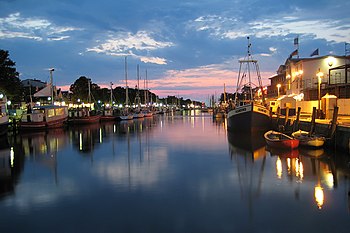
|
The Alter Strom ("Old River") canal in Warnemünde, a sea resort and district of Rostock in Mecklenburg-Vorpommern, situated at the Baltic Sea in the Northeast of Germany at the estuary of the river Warnow. Photo credit: Martin Künzel
Recently featured:
|
May 3

|
Caterpillar of the Spurge Hawk-moth (Hyles euphorbiae) on its primary food source the Cypress Spurge, seen in Kriegtal near Binn, Valais, Switzerland. It is often used as an agent of biological pest control against the noxious weed known as leafy spurge. Photo credit: Daniel Schwen
Recently featured:
|
May 4

|
An HDR image of Upper Antelope Canyon, Page, Arizona. Antelope Canyon is the most-visited and most-photographed slot canyon in the Southwestern United States. It was formed by erosion of Navajo Sandstone, primarily due to flash flooding and secondarily due to other sub-aerial processes. Photography within the canyons is difficult due to the wide exposure range (often 10 EV or more) made by light reflecting off the canyon walls. Photo credit: Luca Galuzzi
Recently featured:
|
May 5
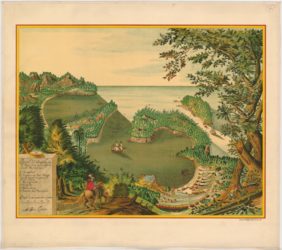
|
A 1628 Spanish relief map of Acapulco and Acapulco Bay, Mexico. During Spanish colonial times, Acapulco was a major port for ships carrying silks and spices gathered from the Asia-Pacific area. For more than 256 years, a yearly trading voyage known as the Manila galleon set sail from Acapulco to the Philippines, ending due to the Mexican War of Independence. Image credit: A. Boot
Recently featured:
|
May 6
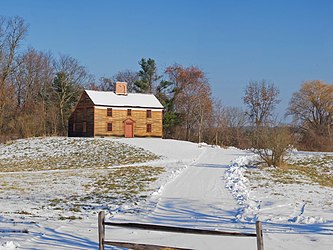
|
A classic saltbox house, outside of Concord, Massachusetts. Originating in New England, this is an example of American colonial architecture. A saltbox has one story in the back and two stories in the front. The flat front and central chimney are recognizable features, but the asymmetry of the unequal sides and the long, low rear roof line are the most distinctive features. Photo credit: Eric Baetscher
Recently featured:
|
May 7

|
A fishing spider with two of its legs missing. Most likely some predator (a bird, or given its habitat a large fish or frog) grasped the spider by the missing limbs which were jettisoned by the spider in response, a process known as autotomy. Photo credit: Fir0002
Recently featured:
|
May 8

|
|
The John F. Kennedy Presidential Library and Museum, designed by I. M. Pei, in the Dorchester neighborhood of Boston, Massachusetts, at dusk. This is the official repository for original papers and correspondence of the John F. Kennedy administration, as well as special bodies of other materials, such as books and papers by and about Ernest Hemingway. Photo credit: Eric Baetscher
Recently featured:
|
May 9

|
The Northern mockingbird (Mimus polyglottos) is the only mockingbird commonly found in North America. It breeds in southeastern Canada, the United States, northern Mexico, the Bahamas, Cayman Islands and the Greater Antilles. This species has occurred in Europe as an extreme rarity. Photo credit: Mdf
Recently featured:
|
May 10

|
The VR warehouses, a group of old red brick warehouses in the centre of Helsinki, Finland, on fire, May 5, 2006. This event had been preceded by the May Day riots just a few days earlier. Some people decided to set up a bonfire between the warehouses in the night of May 1. The fire almost got to the warehouses, and when firefighters tried to put it out, they were attacked by rioters. Riot police were dispatched to protect the firemen; the riot police likewise had stones thrown at them. At first, it was widely believed that the fire was a case of arson, but in July 2006 police concluded that it had been an accidental fire that smouldered for several hours before suddenly breaking out across a large part of the building. Photo credit: Petteri Sulonen
Recently featured:
|
May 11

|
The head and mandibles of an Australian bull ant. Insect mandibles grasp, crush, or cut the insect’s food, or defend against predators or rivals. These mandibles move in the horizontal plane unlike those of the vertebrates. Photo credit: Fir0002
Recently featured:
|
May 12

|
Steam locomotives of the Chicago and North Western Railway in the roundhouse at the Chicago, Illinois rail yards, December 1942. Roundhouses are large, circular or semicircular buildings used for servicing locomotives. Due to the advent of newer railway practices, modern roundhouses are frequently not round and are simply service facilities, although they have retained the traditional name. Photo credit: Jack Delano
Recently featured:
|
May 13

|
A 360-degree spherical panorama of a beach in Marigot, Saint Martin from nine images which uses stereographic projection to create a globe. This is called the "little planet" effect, in which the area close to the point opposite to the center of projection becomes significantly enlarged. Image credit: Alexandre Duret-Lutz
Recently featured:
|
May 14

|
Lights along the fire line memorialize the Rotterdam Blitz, 14 May 2007. On this day in 1940, the Luftwaffe bombarded the city of Rotterdam as part of the German invasion of the Netherlands. About 2.6 km2 (1 sq mi) of the city was leveled and as a result, the Netherlands surrendered to Germany. Photo credit: Yorick Groen
Recently featured:
|
May 15
|
A panorama of Broken Hill, New South Wales, one of Australia's iconic mining towns, backed by the man-made mullock (waste) heaps from the Line of Lode mine (the mullock heaps are the "hills" that stretch across this image). Over 800 workers lost their lives working this mine. Photo credit: John O'Neill
Recently featured:
|
May 16

|
American windsurfer Robby Naish at the 2006 Windsurf World Cup, off the coast of Sylt, Germany. Naish was one of the first athletes to gain long-lasting international fame as a windsurfer. He won his first overall World Championship title, at the age of 13. Photo credit: Hoch Zwei
Recently featured:
|
May 17

|
Red blood cells on an agar plate are used to diagnose infection. The plate on the left shows a positive Staphylococcus infection. The plate on the right shows a positive Streptococcus infection and with the halo effect shows specifically a beta-hemolytic group A. These infections can occur in patients undergoing chemotherapy. Bill Branson, National Cancer Institute
Recently featured:
|
May 18

|
A Red-capped Plover chick (Charadrius ruficapillus) adopting a camouflaged position that helps it avoid detection by predators such as gulls and crows. This plover species is widespread throughout Australia. Photo credit: Benjamint444
Recently featured:
|
May 19

|
The Mission District of San Francisco, California, burning in the aftermath of the 1906 San Francisco earthquake. As damaging as the earthquake and its aftershocks were, the fires that burned out of control afterward were much more destructive. Photo credit: H. D. Chadwick
Recently featured:
|
May 20
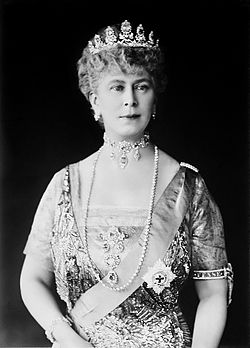
|
Mary of Teck was the queen consort of King George V as well as the Empress of India. Before her accession, she was successively Duchess of York, Duchess of Cornwall and Princess of Wales. By birth, she was a princess of Teck, in the Kingdom of Württemberg, with the style Her Serene Highness. To her family, she was informally known as May, after her birth month. Queen Mary was known for setting the tone of the British Royal Family, as a model of regal formality and propriety, especially during state occasions. She was the first Queen Consort to attend the coronation of her successors. Noted for superbly bejewelling herself for formal events, Queen Mary left a collection of jewels now considered priceless. Photo credit: Bain News Service
Recently featured:
|
May 21

|
Congo national football team goalkeeper Destin Onka (right) prevents Austrian forward Rubin Okotie (left) from scoring a goal at the 2007 FIFA U-20 World Cup. In association football, the goalkeeper is the only player who is permitted to touch the ball with his hands or arms in open play. Photo credit: Nick Wiebe
Recently featured:
|
May 22
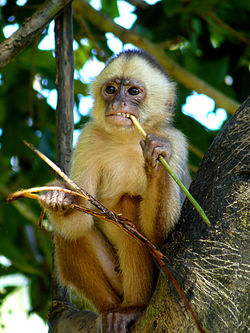
|
The White-fronted Capuchin (Cebus albifrons) is a New World primate, endemic to six countries in South America: Bolivia, Brazil, Colombia, Venezuela, Ecuador and Peru. Like other capuchin monkeys, it is also an omnivorous animal, feeding primarily on fruits, although it can also eat invertebrates and other plant parts. It is a polygamous animal and lives in fairly large groups (15 to 35 individuals), giving birth to a single young at biennial intervals. Photo credit: Whaldener Endo
Recently featured:
|
May 23

|
A carpenter drilling a hole with a crank-powered brace on Douglas Dam, Tennessee in 1942. Carpentry is the term for a wide range of woodworking that includes constructing buildings, furniture, and other objects out of wood. The work generally involves significant manual labor and work outdoors, particularly in rough carpentry. In British and Australian slang a carpenter is sometimes referred to as a "chippie". The German word for carpenter is "Zimmermann", and hence is the source for the surname of many people in German- and English-speaking countries. Photo credit: Alfred T. Palmer, Farm Security Administration
Recently featured:
|
May 24

|
Ice hockey player Wayne Gretzky, as a member of the New York Rangers of the National Hockey League (NHL) in 1997. Gretzky, nicknamed "The Great One", is widely considered the best hockey player of all time. Upon his retirement in 1999, he held forty regular-season records, fifteen playoff records, and six All-Star records. He is the only NHL player to total over 200 points in one season—a feat he accomplished four times. In addition, he tallied over 100 points in 15 NHL seasons, 13 of them consecutively. He is the only player to have his number (99) officially retired by the NHL for all teams. Photo credit: Håkan Dahlström
Recently featured:
|
May 25

|
This woodblock print, titled Kinhyōshi yōrin, hero of the Suikoden, is one of a series created by the Japanese artist Utagawa Kuniyoshi between 1827 and 1830 illustrating the 108 Suikoden ("Water Margin"). The publication of the series catapulted Kuniyoshi to fame. The story of the Suikoden is an adaptation of the Chinese Shuǐhǔ Zhuàn; during the 1800s, the publication of this woodblock series and other translations of the novel created a Suikoden craze in Japan. Following the great commercial success of the Kuniyoshi series, other ukiyo-e artists were commissioned to produce prints of the Suikoden heroes, which began to be shown as Japanese heroes rather than the original Chinese personages. The hero portrayed in this print is Yang Lin. Woodblock artist: Utagawa Kuniyoshi
Recently featured:
|
May 26

|
Queen Wilhelmina of the Netherlands with her daughter and successor Princess Juliana, circa 1914. Wilhelmina was queen regnant from 1890 to 1948, longer than any other Dutch monarch. Outside the Netherlands she is primarily remembered for her role in the Second World War, in which she proved to be a great inspiration to the Dutch resistance, as well as a prominent leader of the Dutch government in exile. Juliana became queen regnant in 1948 after her mother's abdication and ruled until her own abdication in 1980, succeeded by her daughter, Beatrix. Photo credit: Bain News Service
Recently featured:
|
May 27
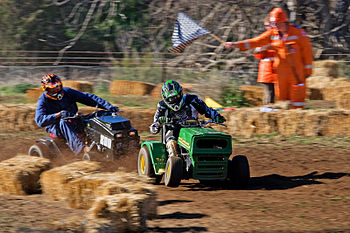
|
Two racers cross the finish line of the 250cc class at the 2007 Swifts Creek lawn mower races. In this motorsport, competitors race modified lawn mowers, usually of the ride-on or self-propelled variety. Original mower engines are retained but blades are removed for safety. Lawn mowers have also been used in kart racing, a different sport. Photo credit: Fir0002
Recently featured:
|
May 28

|
U.S. President Theodore Roosevelt (left) and nature preservationist John Muir, founder of the Sierra Club, stand together on Glacier Point in Yosemite National Park. In the background can be seen Upper and Lower Yosemite Falls. During this trip in 1903, Muir convinced Roosevelt to add Yosemite Valley and Mariposa Grove to the park, which had been established in 1890. Photo credit: Underwood and Underwood
Recently featured:
|
May 29
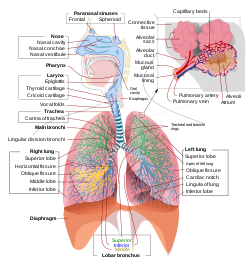
|
A diagram of the human respiratory system, which consists of the airways, the lungs, and the respiratory muscles that mediate the movement of air into and out of the body. Within the alveolar system of the lungs, molecules of oxygen and carbon dioxide are passively exchanged, by diffusion, between the gaseous environment and the blood. Thus, the respiratory system facilitates oxygenation of the blood with a concomitant removal of carbon dioxide and other gaseous metabolic wastes from the circulation. Image credit: Mariana Ruiz |
May 30
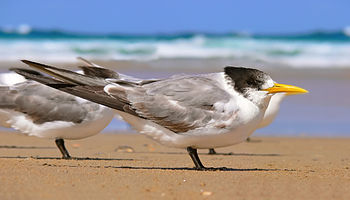
|
A Greater Crested Tern (Thalasseus bergii) in first-year plumage, taken in southeastern Australia at Wingan Inlet in the Croajingolong National Park. This tern breeds in tropical and subtropical coastal parts of the Old World from South Africa around the Indian Ocean to the western Pacific and Australia. Photo credit: Benjamint444
Recently featured:
|
May 31
|
A panorama of Cusco, Peru, as viewed from south of the city near Cristo Blanco. Part of Sacsayhuamán is seen at far right and Plaza de Armas is toward the center of the image. Cusco was the capital city of the ancient Inca empire. Photo credit: Cacophony
Recently featured:
|
Picture of the day archives and future dates


